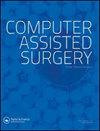Computerized analysis of acceleration parameter for the non-stress test normal and potentially abnormal fetuses
IF 1.9
4区 医学
Q3 SURGERY
引用次数: 2
Abstract
Abstract Non-stress testing (NST) is the primary method of determining fetal condition during the perinatal period, and as such, has high specificity. However, short-term monitoring and visual inspection of the cardiotocogram demonstrates several limitations in understanding fetal status which can be mistaken as predictors of neonatal asphyxia. Fetal electrocardiography (FECG) is a novel, long-term monitoring method which can reflect more objective and accurate fetal information. This article presents experimental results of four fetal heart rate (FHR) acceleration features of 44 fetuses extracted from FECG. The novelty of this approach lies in its combined use of parameters which can express both duration and amplitude of heart rate acceleration. Results demonstrate that most parameters significantly differ between normal fetuses and fetuses with suspected abnormalities. Results are promising for the identification of a set or parameters which may be used as classifiers to improve the success rate when distinguishing between normal and abnormal fetuses.无应力试验正常胎儿和潜在异常胎儿加速度参数的计算机分析
摘要:非应激测试(NST)是确定围生期胎儿状况的主要方法,因此具有很高的特异性。然而,短期监测和心电图的目视检查表明,在了解胎儿状态方面存在一些局限性,这可能被误认为是新生儿窒息的预测因素。胎儿心电图(FECG)是一种新的长期监测方法,能更客观、准确地反映胎儿信息。本文介绍了44例胎儿超声心动图提取的四种胎儿心率加速特征的实验结果。该方法的新颖之处在于它结合使用了可以表示心率加速持续时间和幅度的参数。结果表明,大多数参数在正常胎儿和疑似异常胎儿之间存在显著差异。该结果有望用于识别一组或参数,可作为分类器,以提高区分正常和异常胎儿的成功率。
本文章由计算机程序翻译,如有差异,请以英文原文为准。
求助全文
约1分钟内获得全文
求助全文
来源期刊

Computer Assisted Surgery
Medicine-Surgery
CiteScore
2.30
自引率
0.00%
发文量
13
审稿时长
10 weeks
期刊介绍:
omputer Assisted Surgery aims to improve patient care by advancing the utilization of computers during treatment; to evaluate the benefits and risks associated with the integration of advanced digital technologies into surgical practice; to disseminate clinical and basic research relevant to stereotactic surgery, minimal access surgery, endoscopy, and surgical robotics; to encourage interdisciplinary collaboration between engineers and physicians in developing new concepts and applications; to educate clinicians about the principles and techniques of computer assisted surgery and therapeutics; and to serve the international scientific community as a medium for the transfer of new information relating to theory, research, and practice in biomedical imaging and the surgical specialties.
The scope of Computer Assisted Surgery encompasses all fields within surgery, as well as biomedical imaging and instrumentation, and digital technology employed as an adjunct to imaging in diagnosis, therapeutics, and surgery. Topics featured include frameless as well as conventional stereotactic procedures, surgery guided by intraoperative ultrasound or magnetic resonance imaging, image guided focused irradiation, robotic surgery, and any therapeutic interventions performed with the use of digital imaging technology.
 求助内容:
求助内容: 应助结果提醒方式:
应助结果提醒方式:


